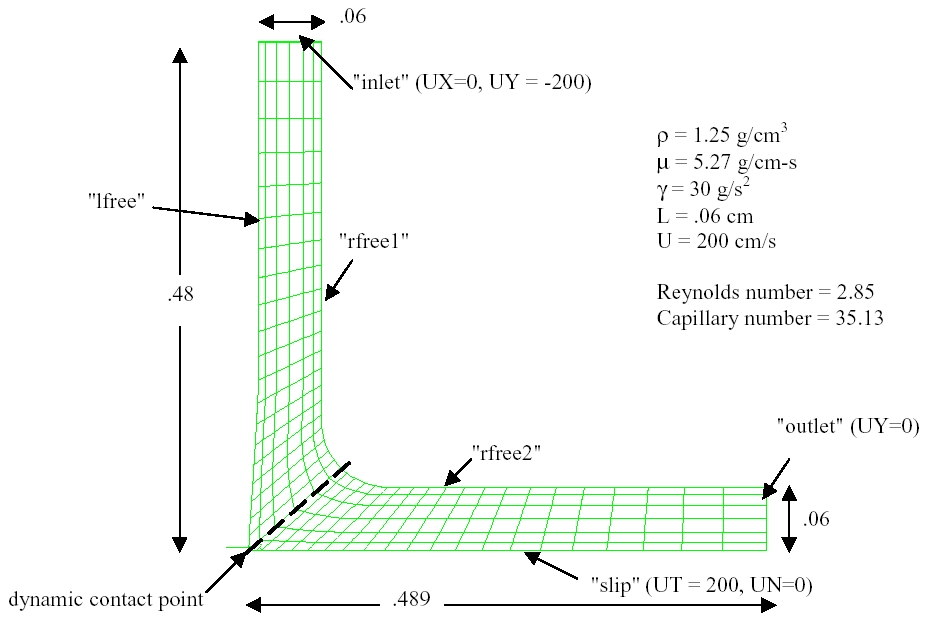
Free surface flow: Curtain coating (from Fluent training)
A liquid layer of viscous fluid is falling down onto a moving horizontal plate. The problem specifications are shown below.
Note that the Capillary number = viscosity x Velocity / surface tension = 5.27x200/30 = 35.13, and Reynolds number = 1.25x0.06x200/5.27 = 2.85.
Free surface entities: lfree, rfree1, rfree2.
Slip boundary condition is applied to a few node points (nodes 14, 156, 136, 155) near the dynamic contact point (node 14).
This helps with the convergence of the solution near the dynamic contact point where a very high stress exists.
For this purpose, the bottom surface needs to have the entity type SLIP.

BCNODE(COORDINATE) is used to specify a local coordinate system (i.e., define local normal and local tangential)
to be associated with the nodes on a SLIP and SURFACE element group.
Here BCNODE(COORDINATE) is applied to correct the local normal for the corner nodes
(nodes 1 and 2 at inlet, node 14 at dynamic contact point, nodes 27 and 28 at outlet).
For these corner nodes, FIDAP computes the normal by moving the point of computation of the normal slightly back from
the corner on the edge.
The algorithms used to compute the normal-tangential transformation are detailed in the FIDAP Theory Manual, Chapter 6.
Initial mesh and special nodes.
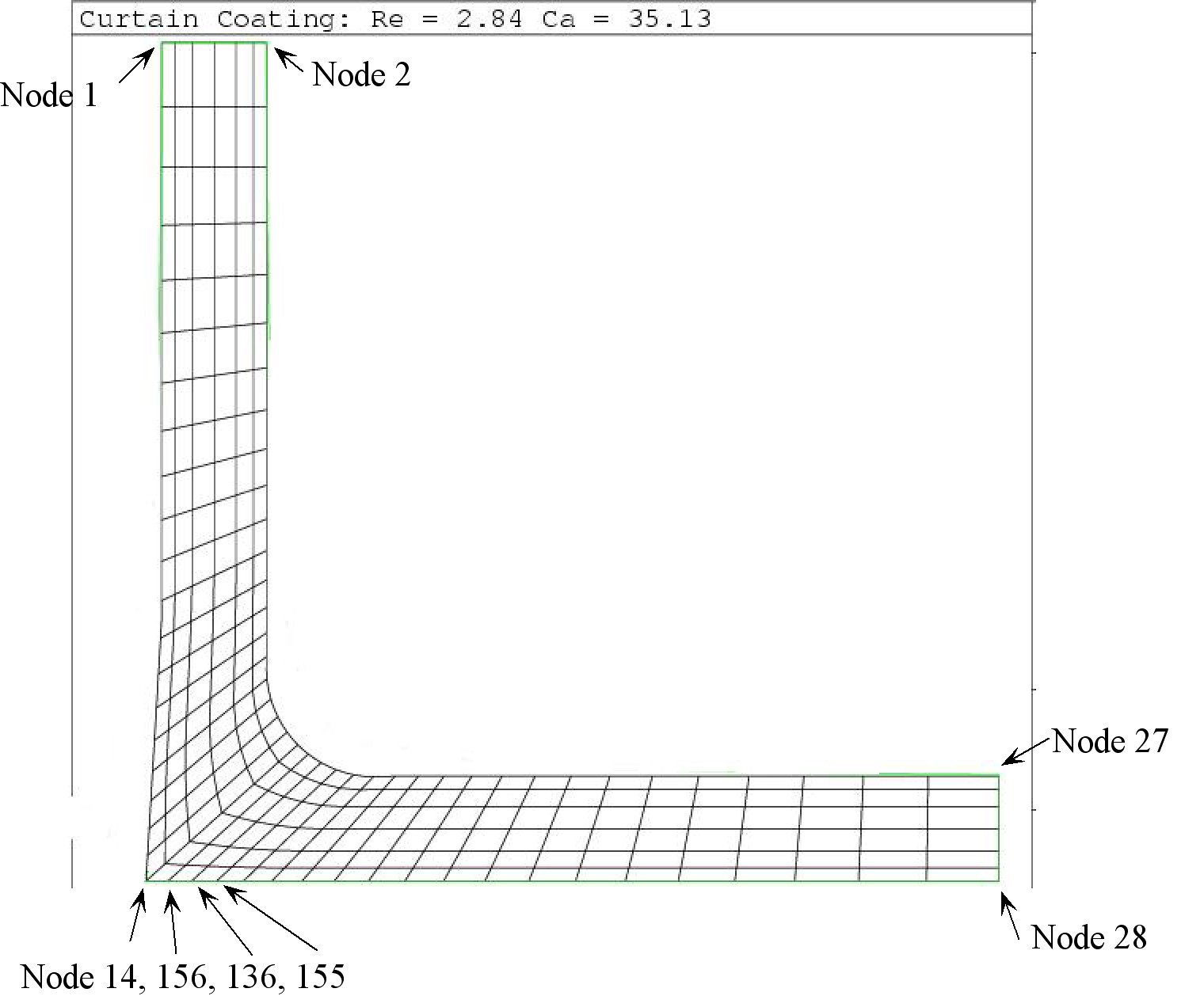
The final deformed, converged mesh.
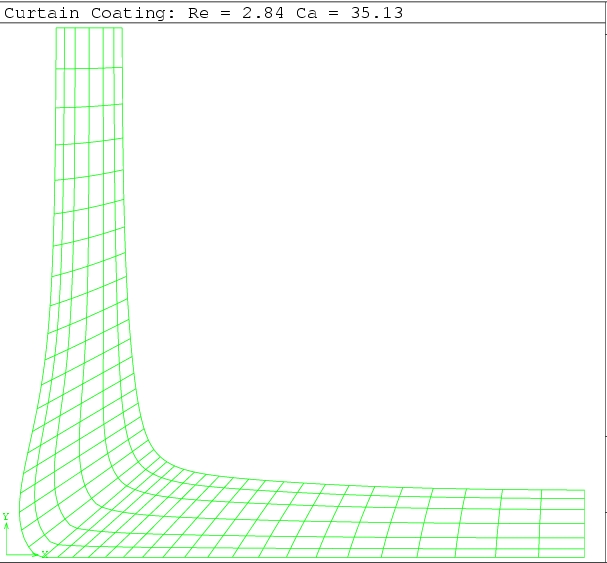
Streamlines.
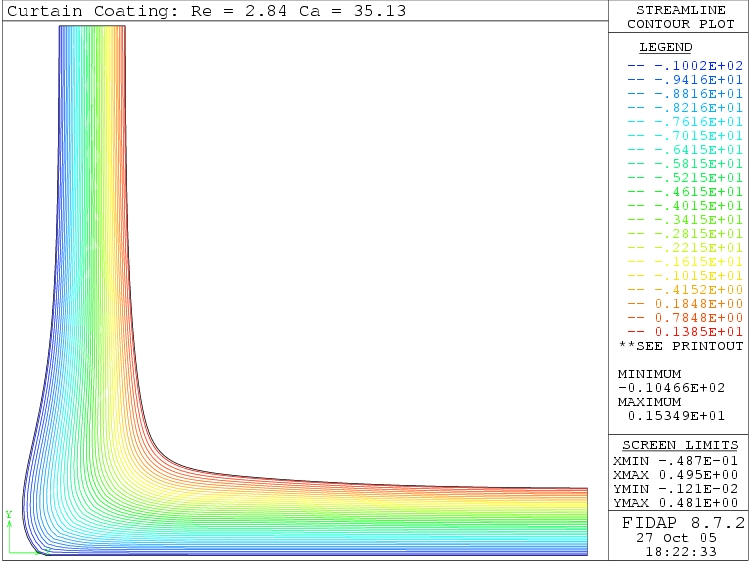
Pressure distribution.
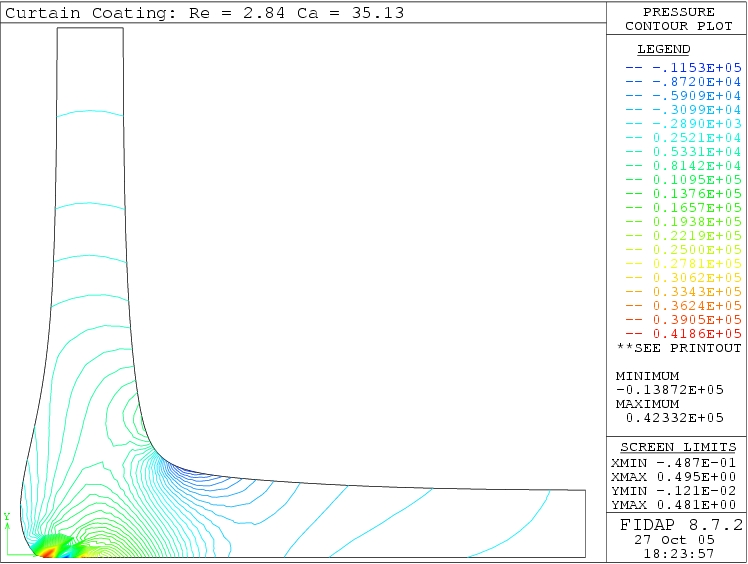
Mesh file:ccoat.FDNEUT
FIDAP setup file:ccoat_p.FDREAD